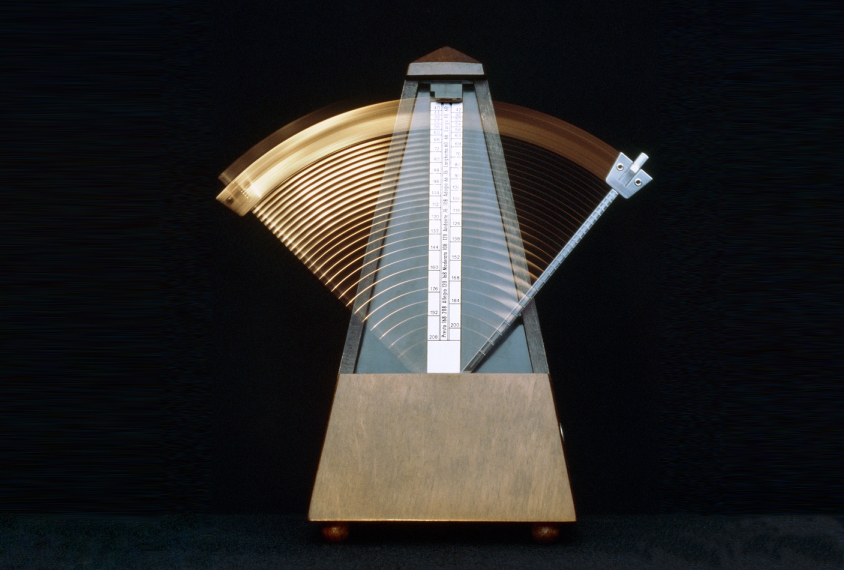
Study of recurring beeps supports ‘magical world’ theory of autism
Children with autism do not predict repeating sights and sounds, even after experiencing them dozens of times over a few minutes.
Children with autism do not predict repeating sights and sounds, even after experiencing them dozens of times over a few minutes.
The findings support the ‘magical world’ hypothesis, in which an inability to detect patterns and predict what happens next underlies some of autism’s core features. If social behavior seems random, for instance, it would be hard to know what to do in social situations. And if sensory stimuli always come as a surprise, a person would naturally be more sensitive to them.
Researchers presented the unpublished findings yesterday at the 2017 Society for Neuroscience annual meeting in Washington, D.C.
The tendency to tune out a repeated stimulus is known as habituation. It’s a mechanism for filtering out ‘background noise’ (or the equivalent in other sensory realms) so that a person can pay attention to important information.
Some studies have suggested that habituation is impaired in people with autism. Most of these studies have tracked responses to a novel sight or sound after the same one has been presented several times.
In the new study, researchers did not insert a new stimulus, but instead simply repeated the same one at a regular, metronomic pace. They recorded brain activity in 10 children with autism and 21 typical children aged 7 to 12 years as the children listened to a series of 300 identical beeping sounds that occurred once every second.
Tuning out:
In the typical children, a spike of brain activity associated with each beep dropped as the children heard more beeps, suggesting that they habituated to the noise.
In many of the children with autism, however, the spike did not diminish, and in some, it intensified over the course of the experiment. As a group, children with autism showed significantly less habituation than the controls, the researchers found.
“They can’t disengage with the stimulus,” says Wasifa Jamal, a postdoctoral researcher in Pawan Sinha’s laboratory at the Massachusetts Institute of Technology, who presented the work. “They can’t tune it out.”
The researchers then showed the two groups of children a checkerboard pattern that flashed on a screen once a second for 300 seconds. Again, they found that the spike of brain activity in response to the pattern gets smaller with repetition in controls — but not in children with autism.
This shows that impairments in habituation affect multiple senses in children with autism, Jamal says. “It’s not domain-specific.”
Children with severe autism features show greater impairments in habituation to the repeated beeps than do those with mild features. (The researchers found no relationship between autism severity and responses to the checkerboard flash.)
Unpredictable world:
The magical world hypothesis is not the only one that is consistent with impaired habituation in autism, says Scott Murray, associate professor of psychology at the University of Washington in Seattle, who was not involved in the work. But, he says, “it totally resonates with me.”
Murray has unpublished brain imaging data that similarly show reduced habituation to a regular, repeated stimulus in people with autism. His study also indicates that the difference in brain activity between people with autism and controls disappears when a stimulus is unpredictable.
The Sinha team is continuing to test the magical world theory, also known as the ‘predictive impairment in autism’ hypothesis, Jamal says. The researchers are studying habituation to touch. They are also using a variety of ways to measure brain activity and other physiological responses. And they are tracking children’s responses to real-world stimuli such as videos or approaching balls.
For more reports from the 2017 Society for Neuroscience annual meeting, please click here.
Corrections
A previous version of the article said the children listened to a series of 50 identical beeping sounds rather than 300.
Recommended reading

Too much or too little brain synchrony may underlie autism subtypes

Developmental delay patterns differ with diagnosis; and more

Split gene therapy delivers promise in mice modeling Dravet syndrome
Explore more from The Transmitter

During decision-making, brain shows multiple distinct subtypes of activity

Basic pain research ‘is not working’: Q&A with Steven Prescott and Stéphanie Ratté
